Desarrollo de contenedores biodegradables para la ... - Dropbox
Desarrollo de contenedores biodegradables para la ... - Dropbox
Desarrollo de contenedores biodegradables para la ... - Dropbox
You also want an ePaper? Increase the reach of your titles
YUMPU automatically turns print PDFs into web optimized ePapers that Google loves.
<strong>Desarrollo</strong> <strong>de</strong> <strong>contenedores</strong><br />
bio<strong>de</strong>gradables <strong>para</strong> <strong>la</strong><br />
industria forestal.<br />
A. Maldonado, J. Carrasco, N. Urra<br />
Unidad <strong>de</strong> <strong>Desarrollo</strong> Tecnológico<br />
Congreso <strong>de</strong> Biorrefinerías<br />
20 <strong>de</strong> Noviembre <strong>de</strong>l 2012
Contenido<br />
1.- Problema y oportunidad<br />
2.- Solución<br />
3.- Resultados<br />
4.- Mo<strong>de</strong>lo <strong>de</strong> negocio y mercado
Problema<br />
y<br />
Oportunidad
Problema y Oportunidad<br />
2.EXTRACCIÓN<br />
1.VIVERIZACIÓN<br />
3.PLANTACIÓN
Problema y Oportunidad<br />
• Se produce stress en <strong>la</strong> plántu<strong>la</strong>s durante <strong>la</strong><br />
extracción y manipu<strong>la</strong>ción.<br />
• Perdida <strong>de</strong> sustrato durante el transporte<br />
(pudiendo llegar a raíz <strong>de</strong>snuda a terreno)<br />
• Muertes <strong>de</strong> plántu<strong>la</strong>s que pue<strong>de</strong> llegar al 5%.<br />
• Costos elevados <strong>de</strong> rep<strong>la</strong>ntación.<br />
• Generación <strong>de</strong> residuos plásticos en terreno.<br />
• Costos <strong>de</strong> extracción y almacenamiento <strong>de</strong><br />
plántu<strong>la</strong>s previo <strong>de</strong>l envío a terreno.<br />
En Chile se p<strong>la</strong>ntan aproximadamente 50 millones <strong>de</strong> p<strong>la</strong>ntas<br />
anuales y <strong>la</strong>s principales empresas CMPC y Arauco utilizan<br />
actualmente este tipo <strong>de</strong> tubetes plásticos.
Solución
Solución<br />
SOLUCIÓN: Desarrol<strong>la</strong>r un contenedor bio<strong>de</strong>gradable que permita una viverización<br />
a<strong>de</strong>cuada y que posteriormente se transp<strong>la</strong>nte a terreno junto con <strong>la</strong> especie forestal.<br />
• El material <strong>de</strong>berá ser procesable por inyección y tener propieda<strong>de</strong>s<br />
mecánicas a<strong>de</strong>cuadas que permita su manipu<strong>la</strong>ción y resistencia en el vivero.
Solución<br />
El contenedor <strong>de</strong>berá bio<strong>de</strong>gradarse en terreno (en 3 meses),<br />
permitiendo el crecimiento <strong>de</strong> <strong>la</strong> p<strong>la</strong>nta y establecimiento <strong>de</strong> <strong>la</strong><br />
raíz.
Resultados
Resultados<br />
Material plástico bio<strong>de</strong>gradable<br />
Proceso Productivo <strong>de</strong> Pellets<br />
Diseño <strong>de</strong> tubete<br />
Desempeño en vivero<br />
Desempeño en terreno
Material plástico bio<strong>de</strong>gradable<br />
+ +<br />
Residuos lignocelulósicos Polímero bio<strong>de</strong>gradable (PLA)<br />
Aditivos compatibilizantes,<br />
p<strong>la</strong>stificantes, lubricantes<br />
FORMULACION TERMOPLÁSTICA: COMPUESTO<br />
BIODEGRADABLE
Material plástico bio<strong>de</strong>gradable<br />
COMPUESTO<br />
BIODEGRADABLE<br />
FICHA TECNICA
Material plástico bio<strong>de</strong>gradable<br />
Caracterización <strong>de</strong>l compuesto bio<strong>de</strong>gradable<br />
Térmica<br />
(DSC y TGA)<br />
Reológica<br />
(viscosidad)<br />
Mecánica<br />
(ASTM D638-03)<br />
Bio<strong>de</strong>gradación<br />
(ASTM D5338)<br />
Procesabilidad Rendimiento
Material plástico bio<strong>de</strong>gradable<br />
Análisis térmico<br />
Termogravimetría<br />
PLA grado inyección<br />
Formu<strong>la</strong>ción<br />
La inclusión <strong>de</strong> material<br />
lignocelulósico influye en el<br />
comportamiento térmico,<br />
<strong>de</strong>scomposición <strong>de</strong><br />
hemicelulosas principalmente
Material plástico bio<strong>de</strong>gradable<br />
Análisis Reológico
Material plástico bio<strong>de</strong>gradable<br />
Análisis <strong>de</strong> Propieda<strong>de</strong>s Mecánicas
Material plástico bio<strong>de</strong>gradable<br />
Análisis <strong>de</strong> Bio<strong>de</strong>gradación
Proceso productivo <strong>de</strong> pellets<br />
Proceso <strong>de</strong> compounding<br />
TEMPERATURAS REFERENCIALES (ºC)<br />
Zona 1 180±5<br />
Zona 2 175±5<br />
Zona 3 170±5<br />
Zona 4 170±5<br />
Zona 5 170±5<br />
Zona 6 165±5<br />
Zona 7 155±5<br />
Zona 8 -
Proceso productivo <strong>de</strong> pellets<br />
Proceso <strong>de</strong> compounding
Diseños <strong>de</strong> tubete<br />
16,02 mm.<br />
39.84 mm.<br />
0,620 mm.<br />
0,650 mm.<br />
Diseño Tradicional<br />
1,521<br />
mm.<br />
1,516<br />
mm.<br />
1,502<br />
mm.<br />
1,296<br />
mm.
Diseños <strong>de</strong> tubete<br />
Consi<strong>de</strong>raciones<br />
• Mantenimiento a<strong>de</strong>cuado <strong>de</strong>l a humedad y<br />
aireación <strong>de</strong>l sustrato.<br />
• Resistencia a <strong>la</strong> manipu<strong>la</strong>ción y el transporte.<br />
• Manejabilidad.<br />
• Precio competitivo al mercado.<br />
Diseño final<br />
0,8 mm.<br />
~ 28 g ~ 14 g<br />
50%
Desempeño en vivero<br />
VIRTUDES<br />
Vivero Carlos Doug<strong>la</strong>s, Forestal Mininco.<br />
§ Tubete resiste los 12 meses, no se <strong>de</strong>sintegra, ni <strong>de</strong>squebraja.<br />
§ El sustrato mantiene un a<strong>de</strong>cuado contenido <strong>de</strong> humedad<br />
§ Tubete resiste manipu<strong>la</strong>ción.
Desempeño en vivero<br />
Atributo morfológico.<br />
Tab<strong>la</strong> 1. Muestra el nivel promedio <strong>de</strong> atributos morfológicos que alcanzaron<br />
p<strong>la</strong>ntas <strong>de</strong> P. radiata cultivadas durante doce meses a raíz cubierta en<br />
Vivero Carlos Doug<strong>la</strong>s.<br />
Don<strong>de</strong>:<br />
Atributo T0 T1 Nivel aceptable<br />
Altura (cm) 21,1 24,4 18 - 40<br />
DAC (mm) 4,4 4,8 ≥3<br />
TO (Tratamiento Testigo. Incluye p<strong>la</strong>ntas cultivadas en <strong>contenedores</strong> <strong>de</strong> plástico<br />
sintético), T1 (Tratamiento Uno. Incluye p<strong>la</strong>ntas cultivadas en <strong>contenedores</strong><br />
forestales bio<strong>de</strong>gradables), Nivel aceptable (Rango establecido por <strong>la</strong> Norma<br />
Chilena 2957) y DAC (Diámetro a Nivel <strong>de</strong>l Cuello <strong>de</strong> <strong>la</strong>s p<strong>la</strong>ntas).
Desempeño en vivero<br />
Atributo fisiológico.<br />
Tab<strong>la</strong> 2. Muestra el nivel promedio <strong>de</strong> nutrientes en acícu<strong>la</strong>s <strong>de</strong> p<strong>la</strong>ntas <strong>de</strong> P. radiata<br />
cultivadas durante siete meses a raíz cubierta.<br />
Tipo Nutriente T0 T1 Rango a<strong>de</strong>cuado<br />
Macronutriente<br />
(%)<br />
Micronutriente<br />
(ppm)<br />
N<br />
P<br />
K<br />
Ca<br />
Mg<br />
S<br />
Fe<br />
Mn<br />
Zn<br />
Cu<br />
B<br />
1.64<br />
0.25<br />
1.15<br />
0.27<br />
0.23<br />
0.17<br />
210<br />
303<br />
36.7<br />
8.0<br />
19<br />
2.35<br />
0.27<br />
1.05<br />
0.26<br />
0.22<br />
0.16<br />
177<br />
190<br />
46.5<br />
7.6<br />
16<br />
1.70 – 2.5<br />
0.12 – 0.25<br />
0.50 – 1.50<br />
0.20 – 0.90<br />
0.10 – 0.30<br />
0.15 – 0.20<br />
50 – 400<br />
100 – 1250<br />
10 – 150<br />
6 – 100<br />
10 - 100
Desempeño en vivero<br />
Conclusiones <strong>de</strong> evaluación en fase <strong>de</strong> viverización.<br />
§ Las p<strong>la</strong>ntas cultivadas en <strong>contenedores</strong> <strong>de</strong> plástico sintético y aquel<strong>la</strong>s<br />
que fueron producidas en <strong>contenedores</strong> forestales bio<strong>de</strong>gradables (CFB)<br />
lograron una calidad aceptable.<br />
§ La estructura <strong>de</strong> CFB resistió a<strong>de</strong>cuadamente <strong>la</strong> etapa <strong>de</strong> viverización.<br />
Plántu<strong>la</strong>s <strong>de</strong> P. radiata cultivadas durante 12 meses, insta<strong>la</strong>dos en<br />
ban<strong>de</strong>ja portacontenedor en Vivero Carlos Doug<strong>la</strong>s
Desempeño en terreno<br />
Fecha <strong>de</strong> p<strong>la</strong>ntación: 14 <strong>de</strong> mayo <strong>de</strong> 2011<br />
Fecha <strong>de</strong> extracción: 17 <strong>de</strong> mayo <strong>de</strong> 2012<br />
Tamaño <strong>de</strong> <strong>la</strong> muestra extraída: 12 p<strong>la</strong>ntas<br />
Mediciones:<br />
En CFB6: <strong>de</strong>sintegración<br />
En p<strong>la</strong>ntas: Altura, DAC, biomasa aérea,<br />
biomasa radicu<strong>la</strong>r
Desempeño en terreno<br />
Desintegración <strong>de</strong> CFB
Desempeño en terreno<br />
Crecimiento en altura<br />
70<br />
60<br />
50<br />
40<br />
30<br />
20<br />
10<br />
0<br />
21,2<br />
62,1 61,9<br />
24,3<br />
24,9<br />
57,3<br />
Tes/go CFB con fractura estructural CFB sin fractura estructural<br />
T0 T1 T2<br />
Promedio <strong>de</strong> H inicial (cm)<br />
Promedio <strong>de</strong> H final (cm)<br />
Gráfico: Muestra el promedio <strong>de</strong> crecimiento en altura (cm) <strong>de</strong> p<strong>la</strong>ntas por<br />
tratamiento.
Desempeño en terreno<br />
Crecimiento en diámetro a nivel <strong>de</strong>l cuello (DAC)<br />
14<br />
12<br />
10<br />
8<br />
6<br />
4<br />
2<br />
0<br />
4,6<br />
12,1 11,9<br />
Tes/go CFB con fractura<br />
estructural<br />
4,9 4,8<br />
10,0<br />
CFB sin fractura estructural<br />
T0 T1 T2<br />
Promedio <strong>de</strong> DAC inicial (mm)<br />
Promedio <strong>de</strong> DAC final (mm)<br />
Gráfico: Indica el promedio <strong>de</strong> DAC (mm) <strong>de</strong> p<strong>la</strong>ntas por tratamiento.
Desempeño en terreno<br />
Crecimiento <strong>de</strong> raíces<br />
Se muestra el promedio <strong>de</strong> número <strong>de</strong> raíces nuevas ≥ 1cm <strong>de</strong> <strong>la</strong>rgo que<br />
lograron formar p<strong>la</strong>ntas <strong>de</strong> P. radiata establecidas con CFB
Desempeño en terreno<br />
Largo <strong>de</strong> <strong>la</strong>s cabellera radicu<strong>la</strong>r (cm)<br />
41<br />
40<br />
39<br />
38<br />
37<br />
36<br />
35<br />
34<br />
33<br />
32<br />
31<br />
39,9<br />
38,9<br />
Tes/go CFB con fractura estructural CFB sin fractura estructural<br />
T0 T1 T2<br />
Gráfico: Muestra el promedio <strong>de</strong> <strong>la</strong>rgo <strong>de</strong> <strong>la</strong> cabellera radicu<strong>la</strong>r (cm).<br />
34,3
Desempeño en terreno<br />
Biomasa seca <strong>de</strong> acícu<strong>la</strong>s (g)<br />
18<br />
16<br />
14<br />
12<br />
10<br />
8<br />
6<br />
4<br />
2<br />
0<br />
15,5<br />
16,3<br />
Tes/go CFB con fractura estructural CFB sin fractura estructural<br />
T0 T1 T2<br />
Gráfico: Indica el promedio <strong>de</strong> biomasa seca <strong>de</strong> acícu<strong>la</strong>s (g) <strong>de</strong> p<strong>la</strong>ntas por<br />
tratamiento<br />
11,2
Desempeño en terreno<br />
Biomasa seca <strong>de</strong> tallo (g)<br />
25<br />
20<br />
15<br />
10<br />
5<br />
0<br />
18,3<br />
20,0<br />
Tes/go CFB con fractura estructural CFB sin fractura estructural<br />
T0 T1 T2<br />
Gráfico: Indica el promedio <strong>de</strong> biomasa seca <strong>de</strong> tallo (g) <strong>de</strong> p<strong>la</strong>ntas por<br />
tratamiento<br />
11,5
Desempeño en terreno<br />
Biomasa seca <strong>de</strong> raíces (g)<br />
12<br />
10<br />
8<br />
6<br />
4<br />
2<br />
0<br />
9,7<br />
8,9<br />
Tes/go CFB con fractura estructural CFB sin fractura estructural<br />
T0 T1 T2<br />
Gráfico: Indica el promedio <strong>de</strong> biomasa seca <strong>de</strong> raíces (g) <strong>de</strong> p<strong>la</strong>ntas por<br />
tratamiento.<br />
5,9
Desempeño en terreno<br />
Conclusiones <strong>de</strong> evaluación en etapa <strong>de</strong><br />
establecimiento en terreno.<br />
§ Los individuos p<strong>la</strong>ntados sin contenedor y aquellos<br />
que fueron p<strong>la</strong>ntados con fractura manual justo<br />
antes <strong>de</strong> realizar <strong>la</strong> p<strong>la</strong>ntación lograron un<br />
crecimiento subterráneo y aéreo a<strong>de</strong>cuado. En<br />
cambio, <strong>la</strong>s p<strong>la</strong>ntas p<strong>la</strong>ntadas con CFB sin fractura<br />
manual no lograron buen <strong>de</strong>sempeño.
Mo<strong>de</strong>lo <strong>de</strong> negocio<br />
y<br />
mercado
Mo<strong>de</strong>lo <strong>de</strong> negocio y mercado<br />
Transferencia <strong>de</strong><br />
paquete tecnológico<br />
(licenciamiento)<br />
v Brasil, tubetes <strong>para</strong> Eucaliptus (En <strong>de</strong>sarrollo)<br />
v Costa Rica (tubete <strong>para</strong> café)<br />
v España, Fin<strong>la</strong>ndia, Cánada, Nueva Ze<strong>la</strong>nda (Tubete <strong>para</strong><br />
diversas especies),<br />
Comercializa Pellet<br />
bio<strong>de</strong>gradables a<br />
empresas extranjeras<br />
Comercializa tubetes<br />
bio<strong>de</strong>gradables en<br />
Chile<br />
EMPRESAS<br />
FABRICANTES DE<br />
TUBETES<br />
EMPRESAS<br />
FORSTALES<br />
v Forestal Mininco (CMPC)<br />
v Arauco<br />
v Viveros forestales menor tamaño<br />
v Viveros <strong>para</strong> frutales (<strong>Desarrollo</strong> tubete frutíco<strong>la</strong>)
Gracias por su atención



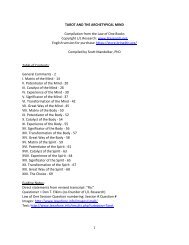
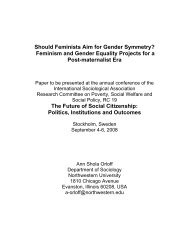

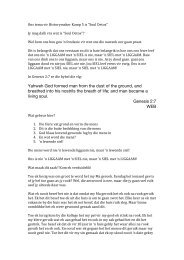
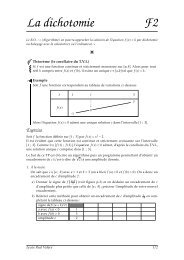

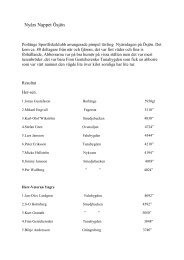

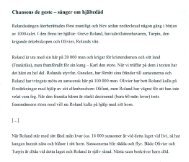
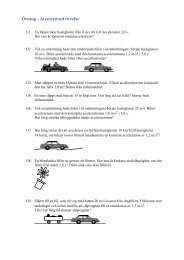
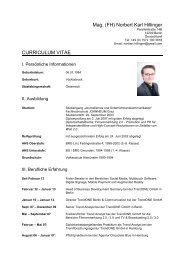
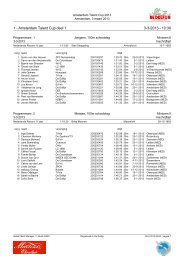
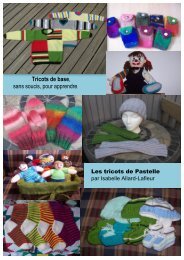
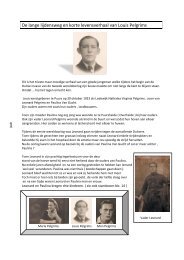
![Analisis Filologis Naskah Merong Mahawangsa [unduh] - Dropbox](https://img.yumpu.com/17722686/1/184x260/analisis-filologis-naskah-merong-mahawangsa-unduh-dropbox.jpg?quality=85)